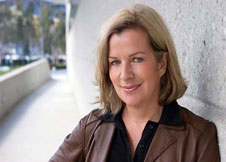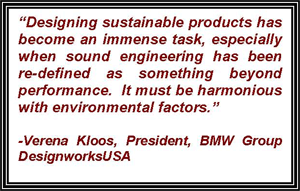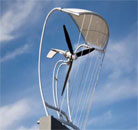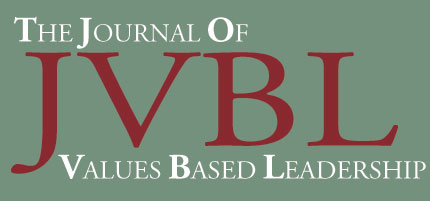- CONTENTS:
- Table of ContentsLetter from the EditorSustainability and the Bottom Line: The Responsible Collusion of Economics, Social Responsibility, and the EnvironmentProgress Toward Zero: The Climb to SustainabilityPlant Tour and Meeting with Members of Interface's Sustainability Team: December 16, 2009Driving Sustainable Innovation: A Pioneer for the 21st CenturySucceeding Through Collaborative Conflict: The Paradoxical Lessons of Shared LeadershipClimate 2030: A National Blueprint for a Clean Energy EconomySpiritual Enterprise: Doing Virtuous Business
- DRIVING SUSTAINABLE INNOVATION: A PIONEER FOR THE 21ST CENTURY


VERENA KLOOS, PRESIDENT,
BMW GROUP DESIGNWORKSUSA,
NEWBURY PARK, CAIntroduction
The future of viable, forward-moving, sustainable businesses will most likely be heavily influenced by the world’s engineers, architects, and designers. With ever-increasing demands to produce energy-efficient automobiles and other forms of transportation, companies known for their prowess in effectively responding to consumer needs with durable and well-engineered goods, are now facing critical environmental challenges in the manufacture of their products.
In response to this challenge, the BMW Group established EfficientDynamics™, a program designed to create a harmonious relationship between conserving and preserving environmental resources while maximizing product performance and appeal.
BMW Group DesignworksUSA, a wholly-owned subsidiary of BMW Group, is akin to a creative think-tank. For clients, including BMW Group, as well as blue-chip companies such as Hewlett Packard, Boeing Business Jets, and Microsoft, DesignworksUSA provides a raft of services from brand communications and strategy to product design. Like its parent BMW Group, DesignworksUSA echoes the EfficientDynamics™ strategy and methods by preparing useful products that satisfy the consumer while advancing sustainable goals of environmental protection. DesignworksUSA has also established its own Sustainable Management System which permits its team to construct a corporate culture around principles of economic soundness, environmental stewardship, and social responsibility.
DesignworksUSA is an integral company within the BMW Group, employing approximately 135 individuals. Its headquarters are situated in Southern California, with additional studios in Munich and Singapore. The company attributes approximately 50% of its commissions from BMW Group, including BMW, MINI, and Rolls-Royce Motor Cars. Verena Kloos, President of DesignworksUSA, has wholeheartedly accepted the multi-faceted challenges of satisfying customer interests, perpetuating aesthetic achievement, and formulating eco-friendly designs. Kloos, who oversees daily company responsibilities and governs the working structure of DesignworksUSA, promotes creativity while concomitantly fashioning a direction of responsible innovation.
Background
Born in Wolfsburg, Germany – coincidentally home to Volkswagen Motor Company – Ms. Kloos began her journey working an internship at Volkswagen, eventually attaining a design degree from the University of Art in Braunschweig. She subsequently became a design director in 1991 for Volkswagen in Simi Valley, California. Prior to her assuming the helm at DesignworksUSA, Kloos worked for DaimlerChysler in Renningen and Sindelfingen, Germany and in Como, Italy, developing passenger car interiors for Mercedes-Benz.
 In relocating to Southern California, Kloos became immersed in a region widely known for being the car enthusiast’s world capital. Kloos is helping to advance the future of BMW vehicles with an environmentally conscious mindset. She has emerged as a true pioneer in her field, recently touted by Automotive News as one of the “100 Leading Women in the North American Auto Industry.”
In relocating to Southern California, Kloos became immersed in a region widely known for being the car enthusiast’s world capital. Kloos is helping to advance the future of BMW vehicles with an environmentally conscious mindset. She has emerged as a true pioneer in her field, recently touted by Automotive News as one of the “100 Leading Women in the North American Auto Industry.”Her supervision of DesignworksUSA’s activities has extended beyond the automobile to include such products as helmets, watches, exercise equipment, bicycles, motorcycles, rooftop wind turbines, household appliances, and furniture for other high-end clients.
In February, 2009, Ms. Kloos kindly granted an interview to the editorial staff of the Journal of Values-Based Leadership.
Interview, February 26, 2009
Newbury Park, California
Q: As the President of BMW Group DesignworksUSA, you appear to be facing two challenges in the business world: (1) your role as a female corporate officer in a predominately male-dominated industry and (2) your position to help BMW and other clients bridge the gap between achieving sustainability in making their products while achieving the aesthetics demanded of customers. Addressing the former, how did you break into the automobile world? Weren’t women generally persuaded away from this type of vocation?
Well, you had to be good at statistics and good at typical drawing and mechanical engineering. You had to encounter a male-dominated engineering field.
Q: Although students in business, law, and other professional and pre-professional schools appear to be nearing gender equality or at least approaching a parity of sorts, the presence of females in the engineering and design fields appear to be somewhat more unbalanced. Would you agree that there still exists a general notion that females are more attuned qualitatively, but less quantitatively?
Funny enough, I wanted myself to finish school with a degree in modern languages: English, French, and Latin. And then on the other side there was biology, chemistry — the natural sciences. I majored in Mathematics and Physics and interestingly enough, I was pretty good with it. But I ended up being the only girl in the class.
Q: In 1986, women who were climbing the corporate ladder and pursuing certain degrees that were typically not permeated by females at that time – both in Europe and in America – ostensibly faced tremendous obstacles. Did you ever feel put down to the degree that you decided that you were not going to go forward or did you have a goal in mind and decide that whatever happens, happens?
During my internship at Volkswagen, there had been so few women around. They asked me to do the exterior design and I said, “No, I don’t want to do that; I’d rather do the interior and color of material” for me to be more comfortable. To get started, it’s very important that you feel comfortable because when you have confidence, you can speak about what you’re doing.
Q: You were challenging things people didn’t expect you to challenge, sort of a pioneer.
I was only a pioneer at Volkswagen because I had the nerve to leave after just two and a half years! They promised me a great career, and it was surprising to everybody but I wanted to experience Japanese car culture. It was ’88-’89…
Q: And that’s when you went to work for Mazda at its Research & Design Center in Germany?
Yes. Mazda was interesting enough, and its studio wasn’t so far away from Volkswagen. As you, can imagine that culture was even more traditional and dominated by men. I was the only woman to be flown back and forth to Japan and I have to admit that felt pretty good!
Q: But before too long Volkswagen called you back with an interesting opportunity?
In 1991, the Chief Designer called to offer me the Executive Director position at the new Volkswagen Design Center in Simi Valley, California. During this time period, European car companies — especially German-owned — needed a facility outside of their headquarters on the west coast. Because there you’ll see the car culture and lots of other things that we need to learn. We need to learn through the eyes of a designer with a lot of the product planning people. And we have people there to take in what they see and what they feel and observe this. They needed to observe the whole environment and to get some inspiration and that is what we did.
Q: How long did you stay at the Volkswagen Design Center?
About three to three and a half years, because I had an assignment for 3 years and then I moved back to Germany.
Q: What exactly did you do for them? Could you name one thing that stands out in your mind, that you are the most proud of?
We did everything for exterior and interior design from wheels and body curvatures to dashboards and seats. During this time we came up with the so-called “four door” coupe, which was very innovative and provocative. It took more than a decade for companies to start actually building these cars, like today’s Mercedes-Benz CLS and Volkswagen CC, because ergonomically the shape of the roofline leaves less space for people sitting in the rear seats. But the proportions are much more sporty and elegant and we felt it was necessary for the American market which is more modern in design and functionality.
Q: At this time, back in the early 90’s, it seems like other than Al Gore very few people understood the degree to which the environment was suffering. What was happening in Europe in the building of more sustainable means of transportation?
In Europe, there were certain products that were becoming more sustainable. Different materials were being experimented with. For instance, cotton items were being used as opposed to synthetic materials. Europe was already focused on smarter development for cars with new brands and eco-friendly products.
Q: For consumers to want them, do you think things need to look good as well as be sustainable and eco-friendly? Brad Pitt’s Company in New Orleans has produced what has been deemed as the “green house of the future;” it’s great in terms of energy efficiency, but frankly, it is not very attractive. Do you see room in the future for combining eco-friendly products with aesthetics?
I have a strong belief that our perception will change — this idea of what is “good” and what that really means. Some things cannot by definition “look good” because in actuality they are doing harm. The criteria for evaluating what looks “good” is becoming more holistic and in some ways, substantive.
You have to remember that designing products that are “good” from the inside out is a relatively new priority for a lot of companies. The goal before was to try and make it great- looking, interesting, and desirable, but now it is the policy of sustainability. And this can be applied to all products, whether it be chairs that you sit on or household products. There’s always the component of sustainability; there is the comprehensive look at the world in all the products we are making.
Q: Do you see a new emphasis on renewable sources of energy?
Yes but, especially in the United States, there is a big sensitivity with regard to cost. I have an old friend from design college who always has bright ideas which certainly have the ability for sustainability but are perhaps not so cost effective. She became a realtor and found that people didn’t want to pay for solar panels or to invest in heavy windows and such. In Germany, they overdo it in my opinion, spending a lot of money up front but they never get a payoff when you calculate how much heating costs are saved. But as demand for sustainable technologies increases, prices will come down, making it easier for consumers to strike that balance between cost and return on investment.
Q: And with the current administration, we’re looking at new investment incentives. Yes, it’s an initial investment that might cause us to have to take out a second mortgage, but there are tax credits which make the investment less costly so it becomes more appealing to the general public. So things appear to be changing. I’m just wondering if that kind of change will also dictate the type of products made and how and what your company designs in the future.
We have to do much more in what is called a life-cycle analysis which involves analyzing various factors of the impact of what the product is doing…not the product by itself, but the materials that make up the system.
Q: At DesignworksUSA, are you in a position to say “no” to a corporation or design if the customer is asking you to make something that is not as kind to the environment as you’d like it to be?
We try to be picky, but not everyone is as far along the green continuum as DesignworksUSA. Sometimes it is part of our job to bring a client along, bring them further into thinking about the long-term implications of its products. In fact, we are now being hired by some major brands specifically to do just this: to help them rethink how their products, some of which may not be particularly kind to the environment in their present state, can evolve to become more eco-sensitive and sustainable.
Q: Are you primarily concerned with better fuel efficiency?
While the engineers that work on elements such as power trains are closer to this question, when it comes to fuel economy, we as designers are primarily looking at the materials involved. It still must be cost effective. We’re looking at all the things that go into the car with particular consideration for weight. These are the projects that are really exciting and sometimes dictate that the company goes in adventurous new directions.
Q: In your current position, I’d imagine you need to do a lot of multi-tasking? Do you have any innovative approaches that help you manage all the activity?
Yes, it’s true I have to do a lot of things all at once. I have to make sure the designers are guided, keep things together, keep up with new technologies. I would love to work in new experimental ways, but I must also make sure that it’s best for the company, too. I have to deal with people of different cultures, different generations, and their everyday personal difficulties, maybe divorce, the usual facts of life, that’s what we learn. And the economic difficulties we are all facing add a lot of stress as well. And so all of a sudden colleagues are saying “maybe we shouldn’t take that cruise or two weeks off,” or “I shouldn’t buy that house,” and we’re all experiencing that pressure.
Q: How is the current economic climate directly affecting DesignworksUSA?
Relatively speaking we’re fortunate here, and in pretty good shape. We do not compromise on the product design. We’d all like for things to be the way they used to be — to salvage the old line, but those days are over, there’s no choice or debate. It’s black and white.
Q: I would think you would have more challenges in the design field than ever before?
Yes. Our clients — BMW Group included — are investing in the product, in research and on top of that, broader design strategy. Without this, the product lines will never change and they won’t thrive and then be cut out. Strong, leading companies keep moving forward despite the faltering economy and keep up with the demands of today. But when you look to tomorrow, you must also look to the past and its traditions as guideposts to your direction forward — and not just follow in another direction completely.
Q: Could some of your major clients down the road be governments, municipalities, states? If a governmental entity were to ask: “We need for you to make ‘X’ product for us” – would you accept this type of client?
Sounds exciting! The great thing about design is that it can adapt to each industry and we can work with any product for any project so long as it’s ethically correct. We don’t do anything for the military, for military education, for the development of weapons and that kind of thing.
_______________________________________________________________________
Postscript
 Company Philosophy. In the pursuit of effective and equitable leadership, personal egos must give way to team collaboration. In the field of design, these goals are conceptually difficult to achieve. Contrary to an isolationist method of individual innovation, BMW Group DesignworksUSA actively promotes openness among its associates, the sharing of ideas, product development meticulousness, team motivation, humility, and shaping new strategies from lessons learned. Even the company’s physical structure lacks walls to encourage idea interchange. The presence of offices in Munich and Singapore gives credence to promoting the confluence of innovative minds in diverse marketplaces.
Company Philosophy. In the pursuit of effective and equitable leadership, personal egos must give way to team collaboration. In the field of design, these goals are conceptually difficult to achieve. Contrary to an isolationist method of individual innovation, BMW Group DesignworksUSA actively promotes openness among its associates, the sharing of ideas, product development meticulousness, team motivation, humility, and shaping new strategies from lessons learned. Even the company’s physical structure lacks walls to encourage idea interchange. The presence of offices in Munich and Singapore gives credence to promoting the confluence of innovative minds in diverse marketplaces. Chris Bangle, Director of Design for the BMW Group (1992-2009), advocates a philosophy of “context over dogma,” where historical trends merge with future vision. Whereas the company has traditionally faced the challenge of fusing technology with aesthetics, it is now confronted with yet another variable to address in design strategy. Creating an eco-friendly automobile is seemingly a tall order for the car known for high performance and superb engineering ― the “Ultimate Driving Machine.”
Chris Bangle, Director of Design for the BMW Group (1992-2009), advocates a philosophy of “context over dogma,” where historical trends merge with future vision. Whereas the company has traditionally faced the challenge of fusing technology with aesthetics, it is now confronted with yet another variable to address in design strategy. Creating an eco-friendly automobile is seemingly a tall order for the car known for high performance and superb engineering ― the “Ultimate Driving Machine.”Common sense dictates that a well-made product will stave off the landfill for a longer period of time. The BMW Group attempts to extenuate product durability by using the input and suggestions for better performance given by special test drivers, reducing the car’s overall weight, and substituting fog lights for air ducts to direct oxygen to the engine to improve its efficiency. The historical maxim has been to mold materials to produce the item; BMW is attempting to reverse this process by using materials to dictate the mold of the car’s elements.
“When you are a global company, you have to let the world in. You have to know what the world is thinking and dreaming.”
–Verena Kloos, President of BMW Group DesignworksUSA
Achievements. In creating well-constructed and engineered vehicles that will have a longer shelf life than their counterparts, controlling costs is always problematic, but in a world confronted with seemingly insurmountable ecological problems, the choice to continue doing business as usual or doing nothing at all is unacceptable.
 With the design of the vehicle and the configuration of other products, the BMW Group is using its worldwide network to face global challenges with its trademark advancements in innovation. Some of the recent accomplishments of the design team include:
With the design of the vehicle and the configuration of other products, the BMW Group is using its worldwide network to face global challenges with its trademark advancements in innovation. Some of the recent accomplishments of the design team include:1. The ecopod.™ The ecopod™ is basically a kitchen appliance designed to maximize room while functioning as an automatic, human-powered, mini-recycling center. Papers, plastics and other recyclable materials are deposited and crushed. Troy Hoidal –- founder of ecopod™ –- commented of its designer: “DesignworksUSA has its foundation in sustainability.”
 2. Aerovironment Wind Turbine. As solar energy becomes much more of an attractive and clean, renewable energy source –- particularly with respect to powering homes and businesses in the Southwestern states -– wind turbine vendors have turned to DesignworksUSA to fashion an attractive, highly functional, rooftop system which incorporates style and purpose into a sustainable structure.
2. Aerovironment Wind Turbine. As solar energy becomes much more of an attractive and clean, renewable energy source –- particularly with respect to powering homes and businesses in the Southwestern states -– wind turbine vendors have turned to DesignworksUSA to fashion an attractive, highly functional, rooftop system which incorporates style and purpose into a sustainable structure.
3. Carbon Reduction Emissions. DesignworksUSA’s parent company, BMW Group, has generated the most significant reduction in carbon emissions of any major car manufacturer during the time period 1990-2003 according to Environmental Defense.
Biography
When Verena C. Kloos was named President of BMW Group DesignworksUSA in September 2004, it was the natural progression in a lengthy and illustrious career spanning more than twenty years with many of the most recognized brands in the automotive industry.
Following her graduation from the University of Fine Arts at Braunschweig in her native Germany, Kloos began her career in 1987 with Volkswagen AG in Wolfsburg as Team Leader of Design, Color and Trim, where she remained until 1989. She then joined Mazda Motor Corporation, serving as Chief Designer, Color and Trim, at its Research & Development Center Europe in Oberursel, Germany. In 1991, Kloos was recruited once again by Volkswagen, serving first as Executive Director at its newly-opened Design Center in Simi Valley, California; then returning to Wolfsburg in 1994 as Project Manager for Strategy and Product Management.
In 1996 Kloos joined DaimlerChrysler AG where she performed three pivotal roles: Senior Manager, Product Planning, for smart Micro Compact Car GmbH in Renningen, Germany; Project Manager, Design, for Mercedes-Benz; and finally President, DaimlerChrysler Advanced Design Italia, in Como, Italy, where Kloos designed and developed advanced interior concepts for the Mercedes-Benz passenger car group including the Mercedes-Benz, Maybach, and smart brands. Among her most notable accomplishments were the development of the trendsetting Mercedes-Benz CLS, the world’s first “four-door coupe,” and the iconic smart premium micro-car.
Today, as President of DesignworksUSA — a wholly-owned subsidiary of BMW Group with 135 employees — Kloos leads the global design consultancy’s strategy and operations including all three of its studios in Los Angeles, Munich and Singapore. She lends her extensive expertise not only to automotive design, as DesignworksUSA serves as the creative think-tank for the BMW Group portfolio including BMW, MINI, and Rolls-Royce Motor Cars, but also to its additional clients spanning a spectrum of industries including aviation, lifestyle and recreation, and design for environments. DesignworksUSA provides brand communications, strategy, design development and prototyping to clients such as Hewlett Packard, Microsoft, Embraer, Boeing Business Jets, Starbucks, Advanced Medical Optics, Bavaria Yachts, and many more.
Under her leadership, DesignworksUSA has been the recipient of more than 30 prestigious design awards including iF product design, red dot product design, and ID magazine’s “Design Distinction.” In 2008, Kloos was recognized by Forbes as one of the top female executives in the auto industry and was named among the “100 Leading Women in the North American Auto Industry” by Automotive News in 2005. She has also served as the keynote speaker at prestigious international conferences including Design Management Institute and ESOMAR, and other global design conferences.
Kloos lives in Malibu, California.

